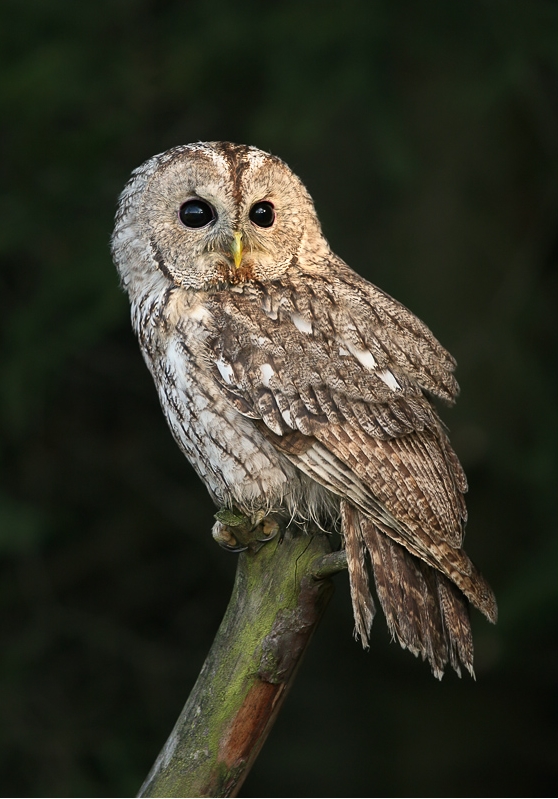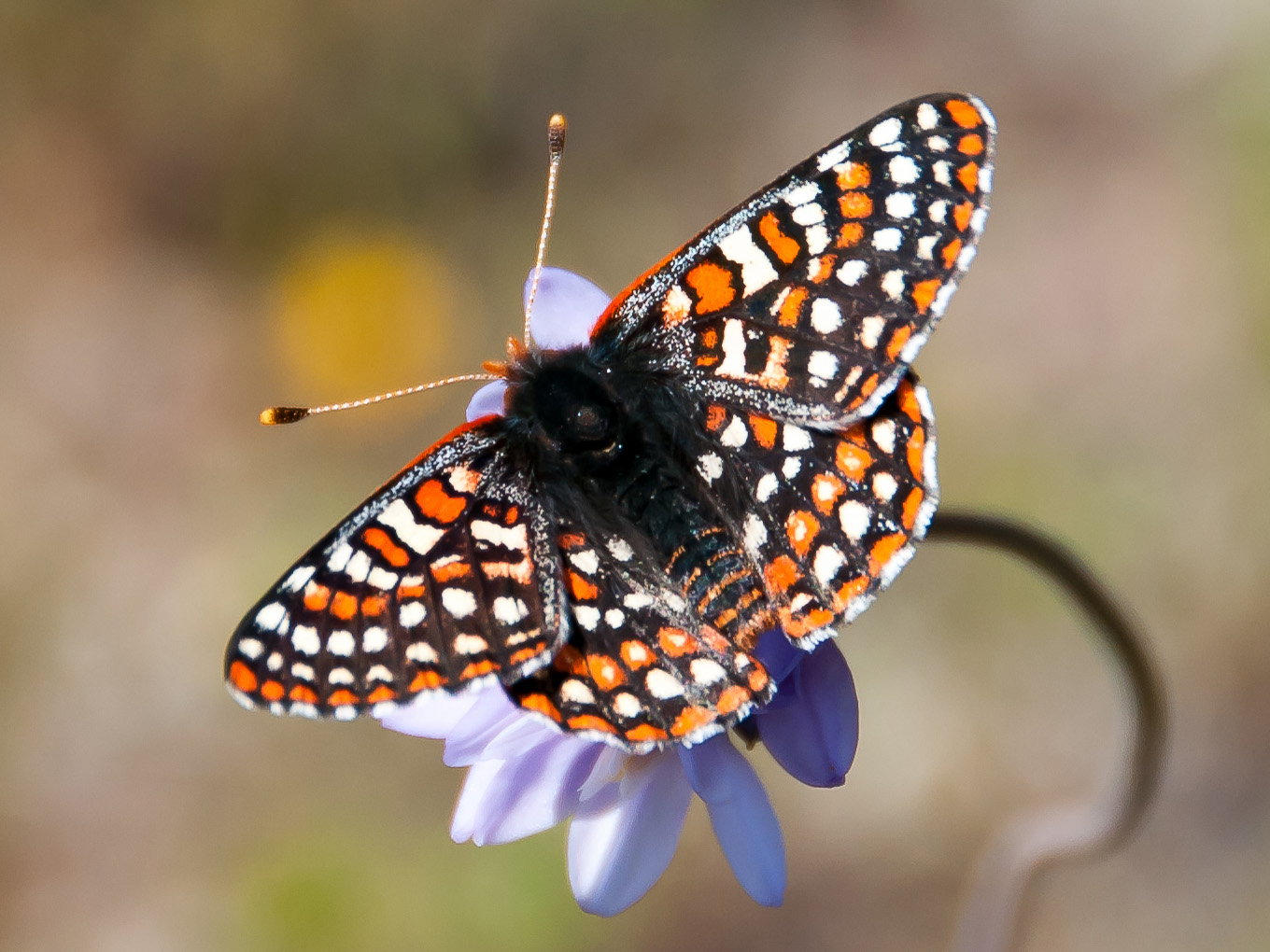Devil worms, grolar bears and other remarkable animal adaptors
Some experts offer doom-and-gloom visions of static animal populations waiting for the end. But as these ingenious species show, life on Earth is always willing to adapt.
S
cientists have been taking lessons in heat adaptation from the lowest-living animal on the planet. The so-called ‘devil worm’, which resides up to 3.6km under the Earth’s surface, was only discovered in 2008, but already this remarkable species is offering up clues into how animals could adapt in the face of climate change.
The species of nematode, or roundworm, thrives in one of the harshest habitats on the planet: in the deepest sections of a South African goldmine, where soaring temperatures, punishing pressure, high methane levels and a scarcity of oxygen make conditions impossible for almost everything except microbes. Scientists were astonished, then, to stumble across the complex, multicellular devil worm in 2008 when researching bacterial communities, and named it Halicephalobus mephisto – after Mephistopheles, the German folkloric demon of the underworld.
Now researchers have sequenced the genome of the devil worm and discovered the secret to its immense resilience. They found that ‘heat-shock’ proteins called Hsp70, which repair damage caused by heat stress, are present in greater quantities than other roundworms, along with another gene family called AIG1. The same combination has since been observed in other heat-adapted species such as molluscs and other soil-dwelling nematodes.
The presence of the two genes in large quantities could offer a clue as to how other animals adapt to heat stress. Future tests will transplant the genes into other roundworms to see whether the combination confers heat resistance. Meanwhile, NASA is even funding research into what the humble worms could tell us about life beyond Earth.

A devil worm up close. Image courtesy Gaetan Borgonie/University Ghent
Move, adapt or die
Climate change is affecting conditions so drastically that many scientists say Earth’s sixth mass extinction event is already underway. A 2018 report by the WWF showed that humanity had wiped out 60% of all animals since 1970, while another projected that if we do not curb emissions and temperatures rise by the projected 4.5C, up to half the animals and plants in the world’s most biodiverse areas will go extinct by 2100.
Faced by changing conditions, animal species can respond in three ways: they move, adapt or die. But attempts to shift to cooler altitudes or latitudes can pitch them into competition for food with unfamiliar species – or put them in the sights of new predators. Relocating might be impossible due to motorways or housing estates, while some species, such as the North American pika rodent, are already operating at the extremes of their preferred range of conditions.
Where relocation is impractical, however, many species are showing signs of adaptation to the new normal.
One example is the pink salmon. Like other salmon species, this Pacific fish has a genetically encoded migration instinct: they swim up rivers from the ocean to spawn on freshwater gravel beds, where they die. But scientists have discovered that one pink salmon population in Auke Creek, Alaska, is now migrating on average two weeks earlier than they did 40 years ago. The change has occurred through natural selection: over the period from 1983 to 2011, as temperatures have risen 1 degree celsius, the frequency of a genetic marker for late migration has dropped significantly – with late-migrating fish now only making up 10% of the population.
Similar adaptation has been found in Finland’s tawny owl population. The degree of brownness in a tawny owl’s feathers is dictated by a pigment called pheomelanin. Though a regular brown is the most common coloration, some tawny owls have a pale brown or greyish hue that helps them blend into snowy trees and avoid predators.
As winter temperatures have risen in Finland, resulting in less snow, a significant increase in brown-plumed owls has been noted in one population over the last 28 years. Nationwide, the frequency of brown owls has also grown over the last 48 years. Researchers suggest that brown owls are better able to blend in against woodlands and survive to pass on their genes – another example of natural selection at work.

Advantage for brown owls? Photo Martin Mecnarowski
Rapid response
Not all examples of adaptation are occurring over generations, however: there are some astonishing examples of individual populations adapting within a single generation.
A good example has been observed in corals. When faced with overly warm waters, corals ‘bleach’: they expel the symbiotic species of photosynthesising algae that live inside them, which give them both their colour and their means of collecting energy, leaving themselves susceptible to starvation.
Scientists studying coral populations around American Samoa in the early 2010s found many had not bleached despite the warmer waters. When a sample was exposed to higher temperatures in the lab, only 20% of them ‘bleached’, whereas 55% of coral from cooler waters did. This is natural selection: corals from hot waters had evolved to be heat-resistant over generations.
Most interestingly, however, when moved to hot pools for a year, the coral from cooler waters showed a reduced tendency to expel their algae, with only 32.5% bleaching. The coral had learned to adapt. This phenomenon is known as phenotypic plasticity, which denotes an organism’s capacity to change its behaviour and physical characteristics in response to its environment. Underlying it is a process called epigenetics, whereby environmental factors can alter the expression of genes without changing the genetic makeup of the species itself.
One astonishing case of epigenetic adaptation can be found in the winter skate fish population of the Gulf of St Lawrence in Canada. Over a relatively short evolutionary period – 7,000 years – the population has reduced its average body size by 45%, enabling it to thrive in waters that are 10 degrees warmer than the nearby oceans. In warmer, oxygen-depleted waters, smaller fish can more easily absorb enough to survive. And the best thing? The adaptation occurred through epigenetics alone: scientists found 3,653 changes in gene expression, but the Gulf skate fish remain genetically identical to their cousins in the wider Atlantic.

A Quino Checkerspot butterfly – not so dead after all. Photo by Andrew Fisher /Wikimedia
When it comes to sudden adaptive shifts, however, species will have to go some way to outdo the quino checkerspot butterfly. Ten years ago, many scientists had consigned this pretty species native to Mexico and California to the graveyard of history. Populations had collapsed due rising heat and the depletion of the plantain species on which it laid its eggs. The butterfly’s pathway north was blocked by the sprawling metropolis of LA. The quino checkerspot was even earmarked for an ‘assisted colonisation’ programme to transfer it to cooler climes – when the butterfly astonished researchers by laying eggs on a flowering plant it had never eaten before, in cooler, higher territory to the east. The quino checkerspot had defied climate change – and scientific predictions – by overhauling its diet and habitat in the space of a decade.
Bear necessities
Last (and perhaps the cutest) of our examples of adaptation is that of the ‘grolar bear’. One unexpected upshot of global warming is polar bears and grizzlies have been drawn into contact for the first time, as the former are forced onto land by melting summer ice, and the latter move northward to access better climates. Their meeting has given rise to a totally unforeseen – and apparently successful – instance of hybridisation. In 2010, a hunter came across a second-generation specimen, demonstrating that the interbreeding of the two species produces healthy and fertile descendants, and that these lumbering beasts of a shimmering white-brown hue could be here to stay.
The grolar bear is a perfect demonstration of nature’s capacity to surprise us. Experts are understandably worried about the climate change threat – but their predictions don’t always take into account nature’s resilience and imagination. ‘Most of the models that ecologists are putting out are assuming that there’s no adaptive capacity. And that’s silly,’ University of Melbourne geneticist Ary Hoffmann told National Geographic. ‘Organisms are not static.’
This doesn’t mean we can be blase about the looming sixth mass extinction – but it does mean we can be confident that, given the choice to adapt or die, much of life on Earth will do what it has always done: adapt.
The ideas presented in this article aim to inspire adaptation action – they are the views of the author and do not necessarily reflect those of the Global Center on Adaptation.